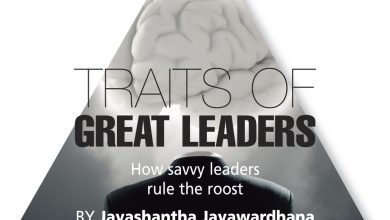STRATEGIC THINKING
HORSE SENSE
Jayashantha Jayawardhana separates decision-making from strategic planning

Even today, many business executives place too much emphasis on the importance of strategic planning as a tool for making strategic decisions. But the fact of the matter is that business executives need to apply strategic thinking to make strategic decisions. I know I’ve used the word ‘strategic’ many times in these two sentences; and had this been an online article, it could easily have amounted to ‘keyword stuffing.’
Humour me! It’s all for business.
“Strategic planning is not strategic thinking,” writes Henry Mintzberg – a prominent management scholar and author of The Rise and Fall of Strategic Planning – in his 1994 HBR article adapted from the same book.
He continues: “Indeed, strategic planning often spoils strategic thinking, causing managers to confuse real vision with the manipulation of numbers.” Mintzberg argues that the most successful strategies are visions, not plans – a fact with which I can’t help but concur.
This is so because such planning is a mode of strategic programming that involves the articulation and elaboration of strategies or visions that already exist. If strategic decisions are based solely on strategic planning, it goes without saying that a business will be doomed to the status quo while the rest of the world passes by.
Instead, strategic decisions should be informed by both the soft insights business executives gather from their personal experiences and experiences of others in the organisation, hard data from market research and so on. Obviously, this means that strategic decisions should be informed by what a businessperson learns from all sources.
One major reason for executives embracing strategic planning is that there’s an air of certainty and predictability to it. It’s without that messy, inchoate, asymmetrical and imperfect feel that is usually associated with the formulation of a strategy or vision that’s based on intuition and creativity.
But to rely solely on strategic planning is also to settle for the predictable and safe, without any loose strands. Moreover, some executives may feel overwhelmed by the limitless scope of such an imprecise vision of direction.
Mintzberg cites the vision of Jim Clark, Founder of Silicon Graphics, that 3D visual computing is the way forward to make computers easier to use. It is a perfect example of an imprecise and imperfect but powerful vision. In a somewhat similar case, one day in 1943, when Edwin Land’s three-year-old daughter asked why she could not immediately see the photograph he’d just captured of her, he mulled over her question and conceived the idea of the Polaroid camera – within the hour.
No matter how impressive and credible a strategic plan looks and sounds, transformative business strategies can rarely be developed on schedule and impeccably formulated. I know it’s tempting to assume that planning is a futile exercise and that grand visions are nothing but chance, random events or so-called strokes of luck. But trust me, nothing could be further from the truth. As the legendary American inventor Thomas Alva Edison put it: “Genius is one percent inspiration and 99 percent perspiration.”
Surely, the extraordinary success of a business is influenced to a considerable extent by the timing factor? Considering the astonishingly high rate of failure, the existence of an element of luck, coupled with timing, cannot be entirely ruled out.
But those grand and transformative strategies almost always originate from countless hours of study of the subject in many different forms, with an unwavering resolve and insatiable passion.
Visionaries are visionaries not by accident. This argument about success however, is not applicable to political phenomena like crony capitalism.
The strategic planning component is helpful in the strategic decision-making process as long as the planners provide business executives with accurate hard data and formal analysis that catalyse and assist with strategic thinking. Once a strategy has been conceived, its execution also invariably calls for detailed planning. When it is a regular business operation, planning becomes an indispensable tool to achieve the avowed objectives.
But I must warn you about one critical mistake some businesspeople may inadvertently make: a plan or schedule, no matter how neatly laid out it is, is not the holy grail; it is one of a set of tools you use to make decisions.
If your intuitive judgment or experience calls for an adjustment on the spreadsheet or tells you to scrap it altogether, following your gut feeling would be in the best interests of the business.
Often in business, even the smartest plan is no substitute for horse sense.





